Run sheets Samples
-
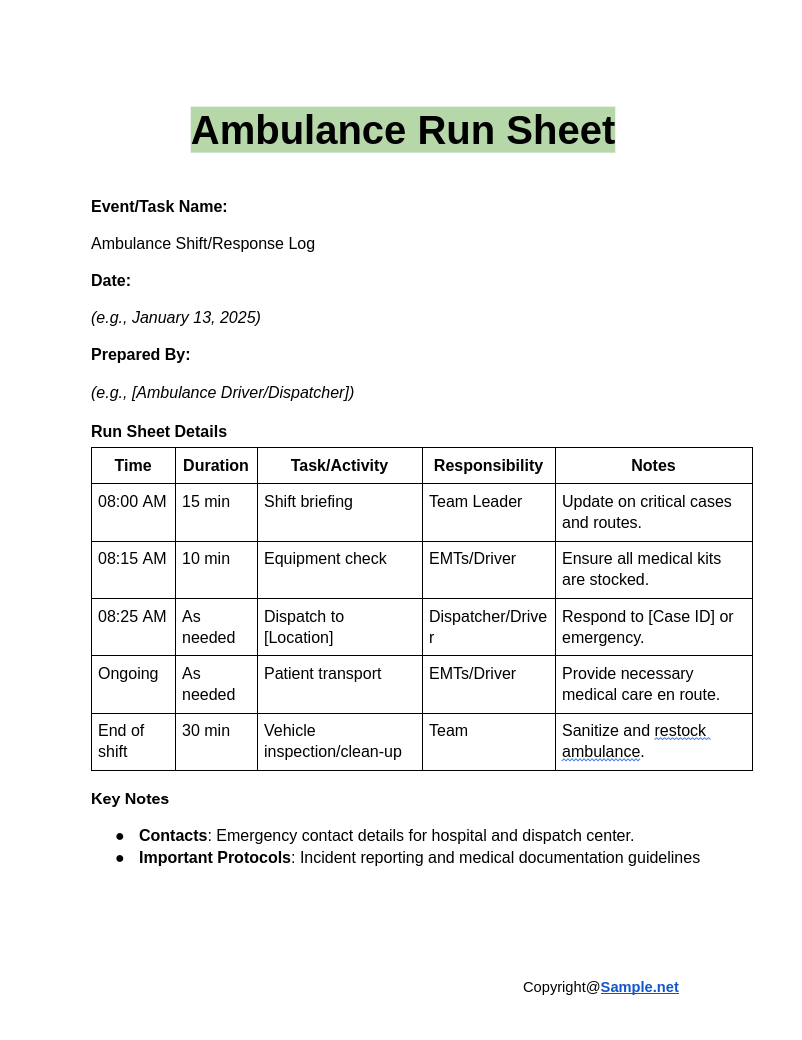
Ambulance Run Sheet
download now -
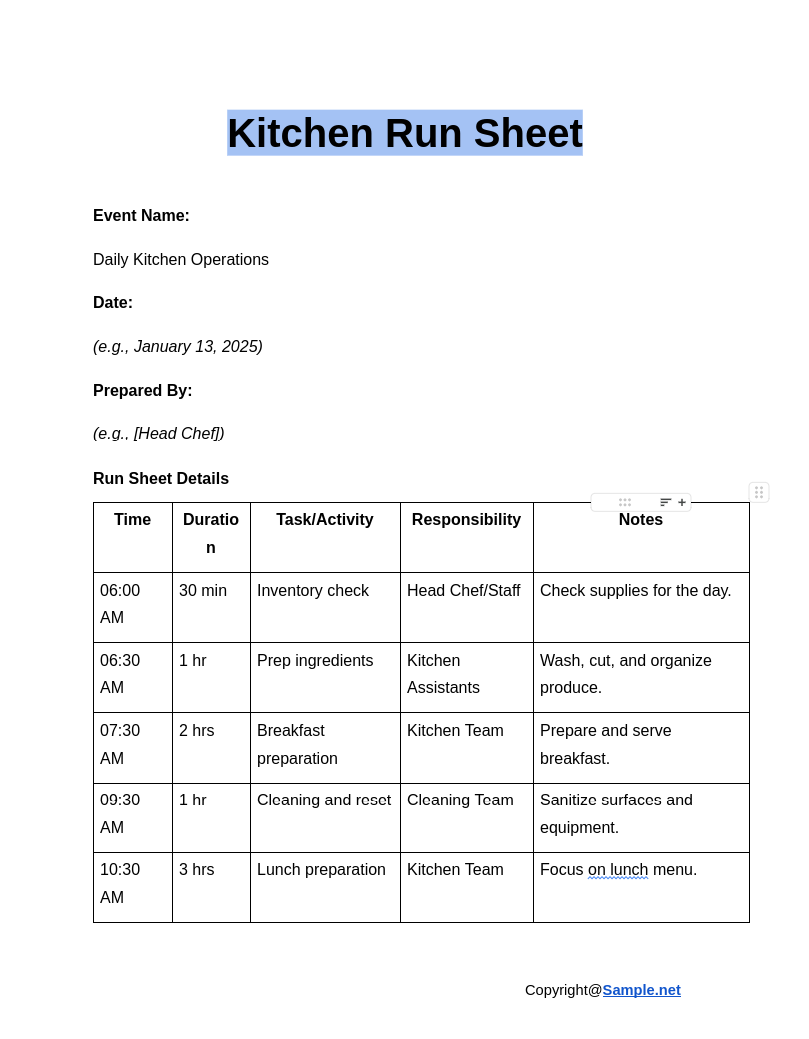
Kitchen Run Sheet
download now -
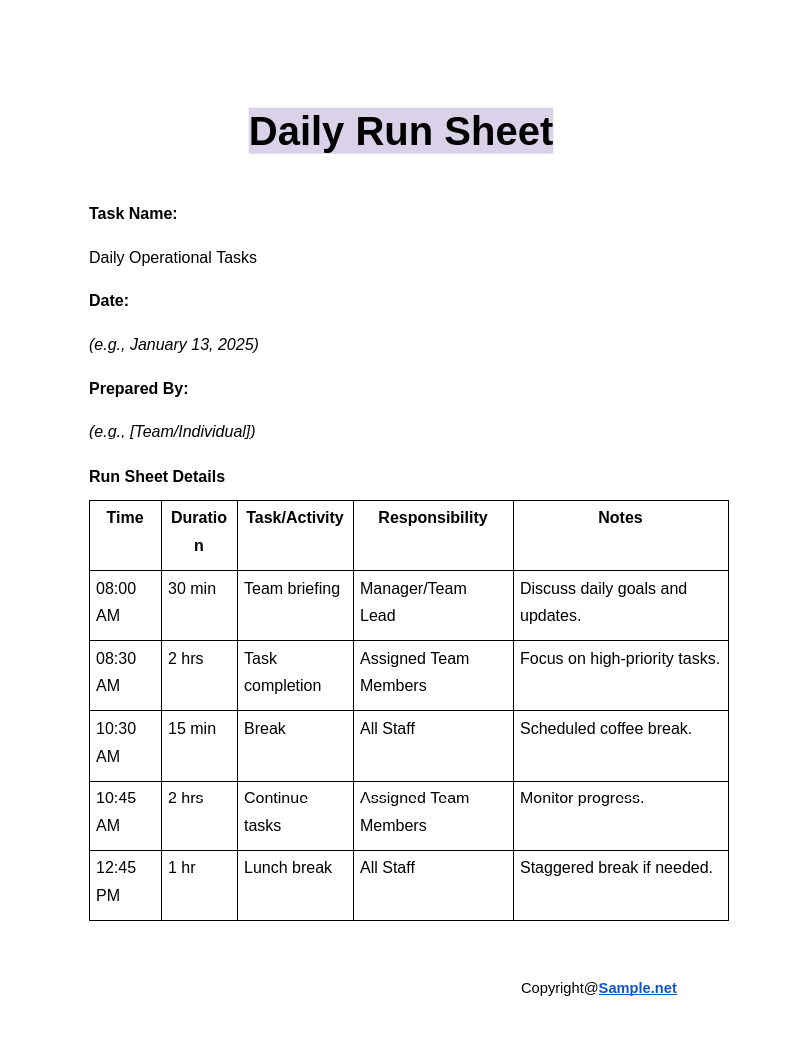
Daily Run Sheet
download now -
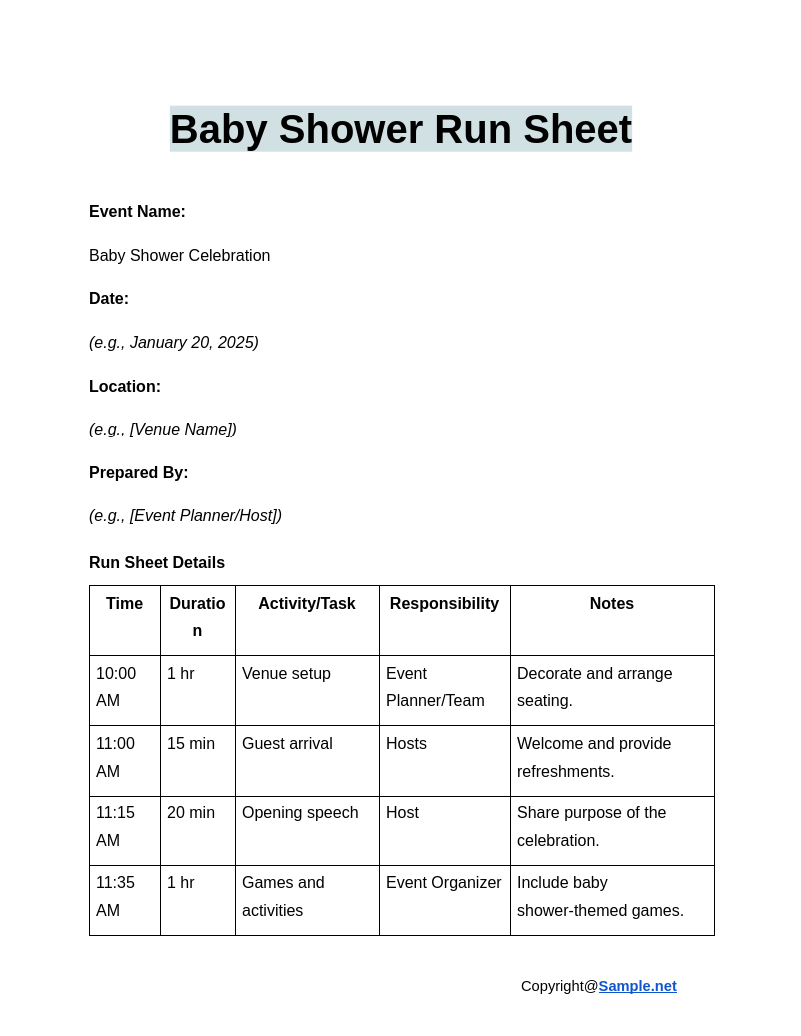
Baby Shower Run Sheet
download now -
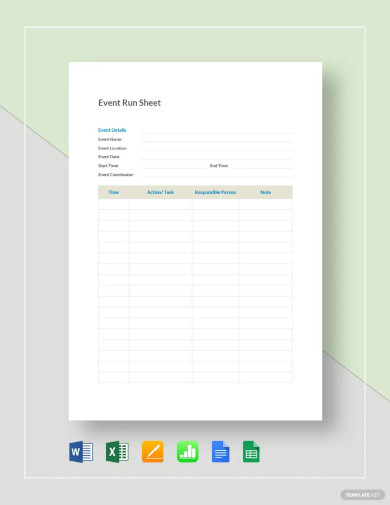
Event Run Sheet Template
download now -
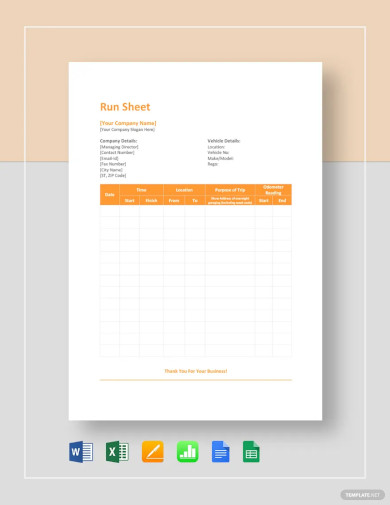
Run Sheet Template
download now -
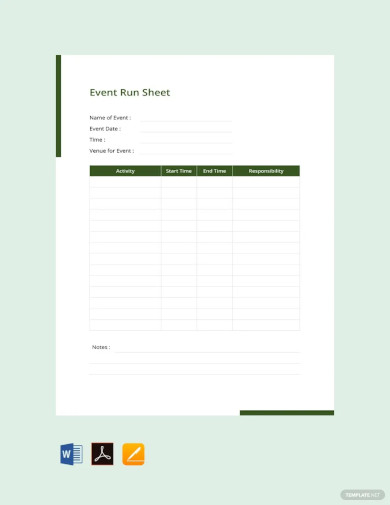
Sample Event Run Sheet Template
download now -
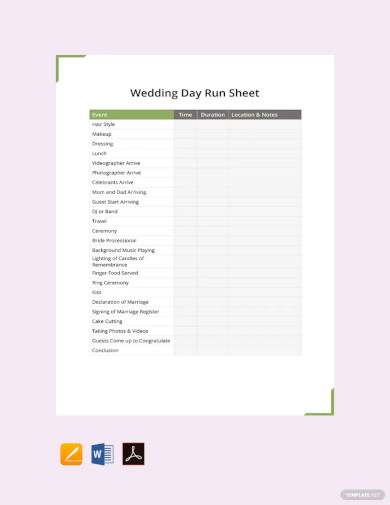
Wedding Day Run Sheet Template
download now -

Free Production Run Sheet Template
download now -
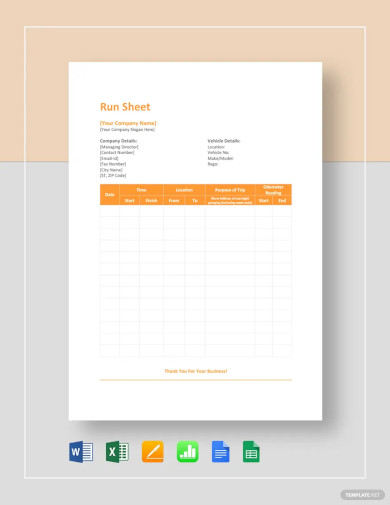
Run Sheet Template
download now -
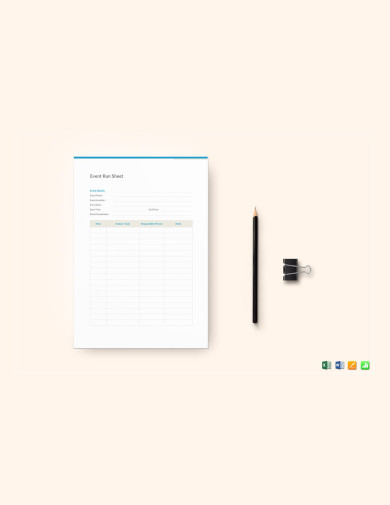
Event Run Sheet Template
download now -
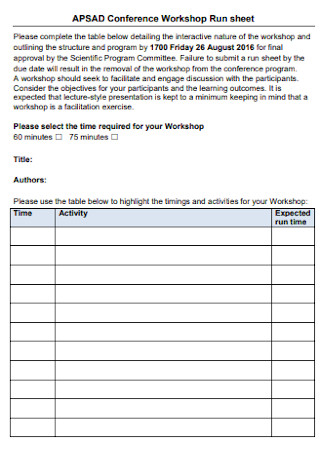
Conference Workshop Run Sheet
download now -
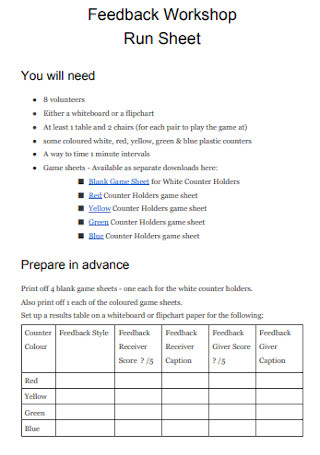
Theatre Run Sheet
download now -
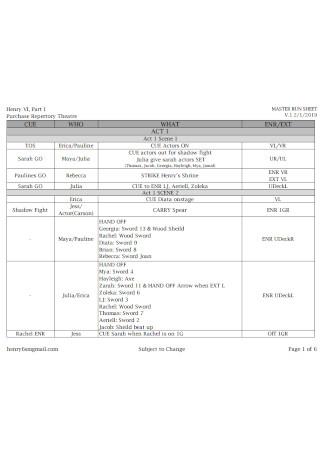
Stage Manager Run Sheet
download now -

Event Run Sheet
download now -
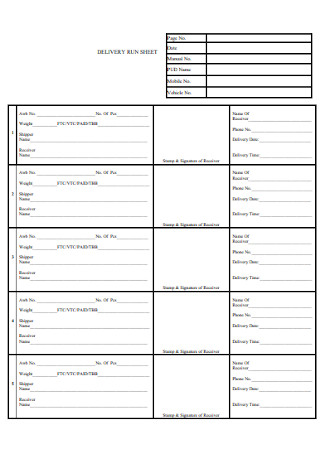
Reception Run Sheet
download now -
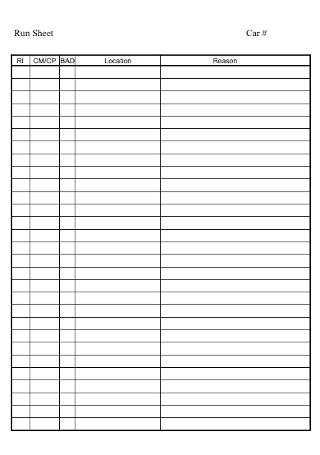
Ceremony Run Sheet
download now -
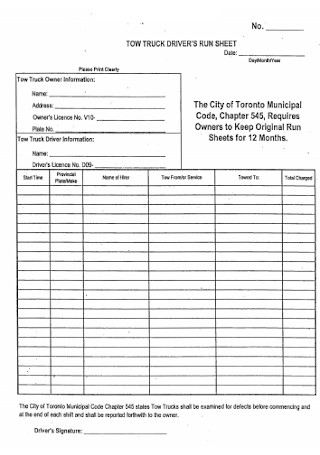
Radio Run Sheet
download now -

Photoshoot Run Sheet
download now -
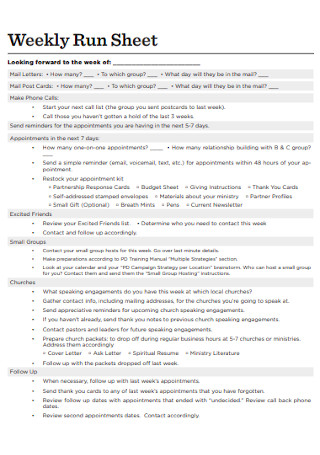
Courier Run Sheet
download now -
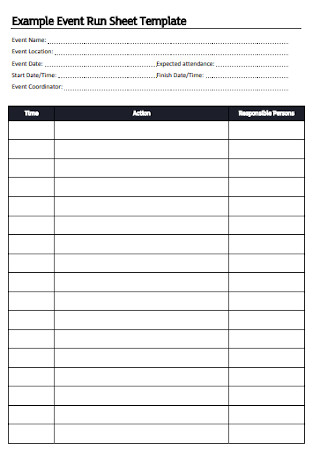
Film Run Sheet
download now -
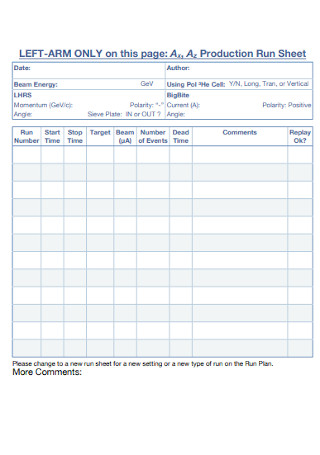
Driver Run Sheet
download now -
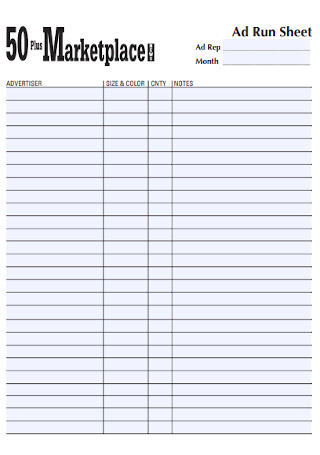
Hospitality Run Sheet
download now -

Party Running Sheet
download now -
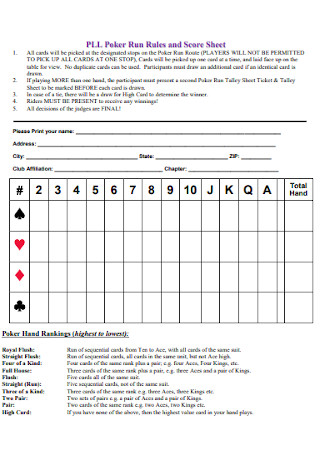
Catering Run Sheet
download now -
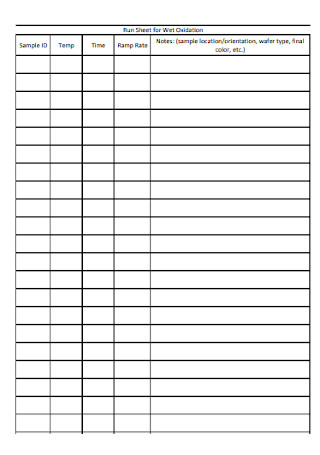
Medical Run Sheet
download now -
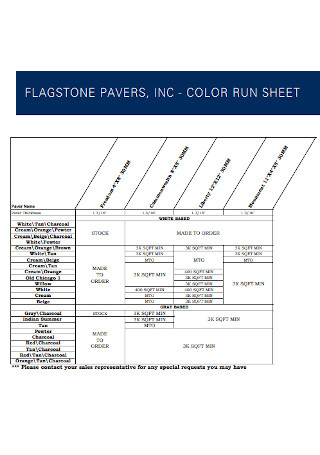
Cocktail Wedding Run Sheet
download now -
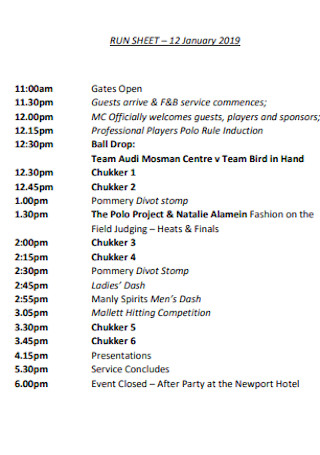
Presentation Run Sheet
download now -
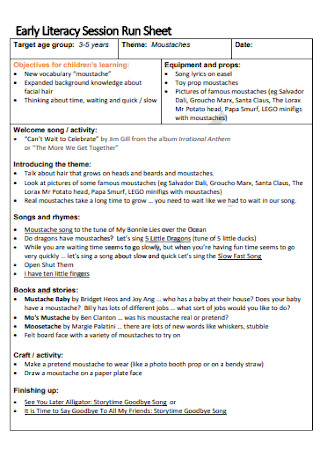
Dialysis Run Sheet
download now -
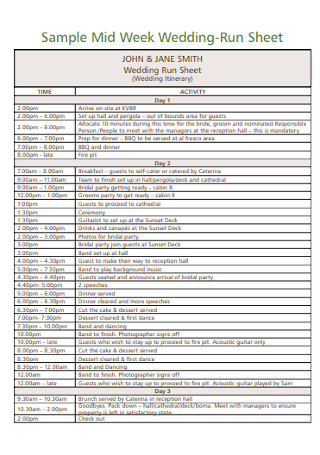
Project Run Sheet
download now -
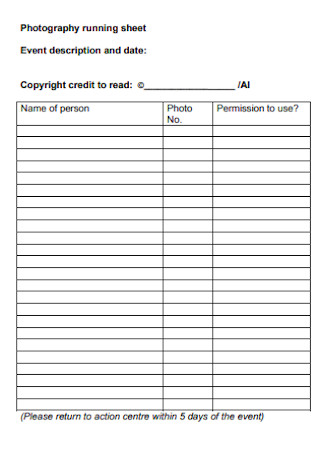
Photography Running Sheet
download now -
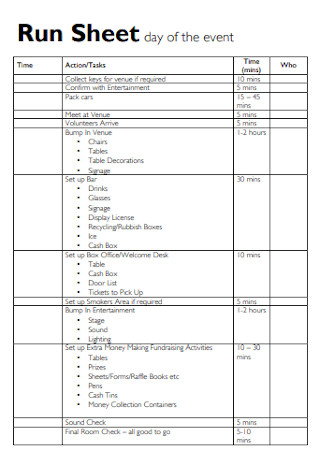
Corporate Event Run Sheet
download now -
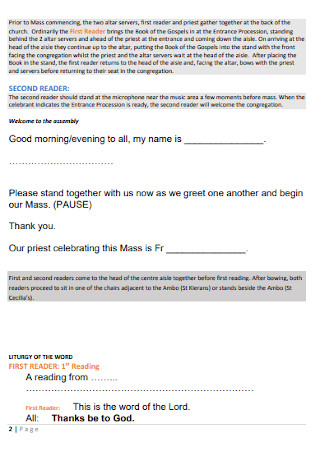
Festival Run Sheet
download now -
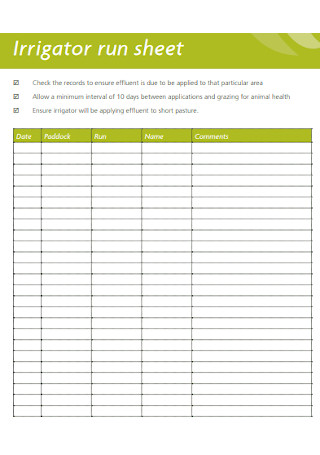
Irrigator Run Sheet
download now -

Standard Run Sheet
download now -
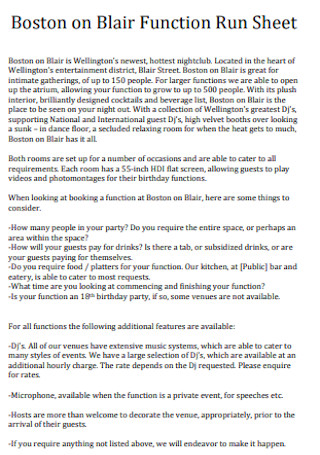
Function Run Sheet
download now -
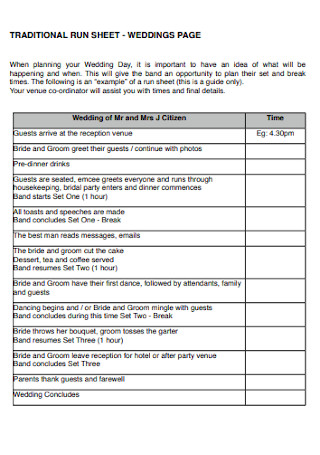
Traditional Run Sheet
download now -
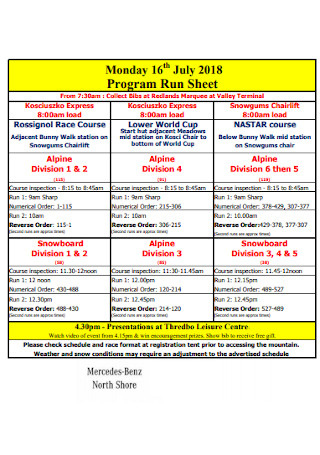
Program Run Sheet
download now -
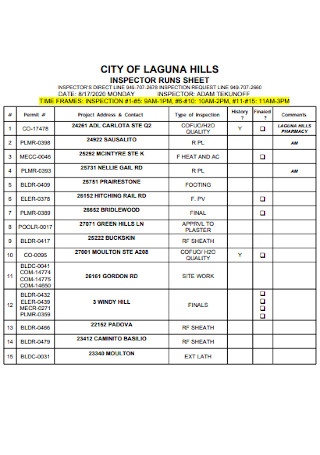
Sample Inspection Run Sheet
download now -
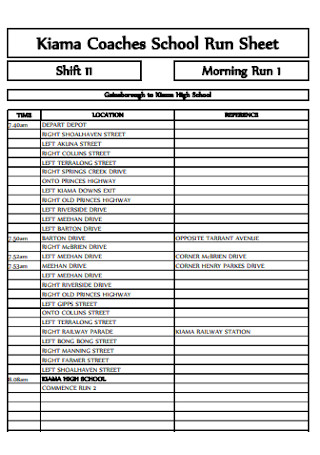
School Run Sheet
download now -
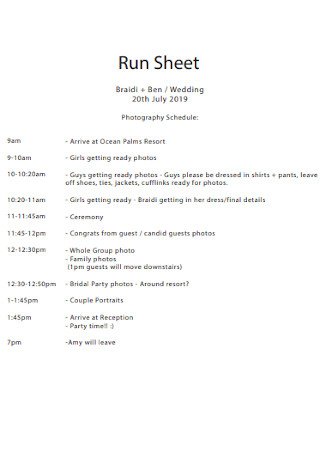
Run Sheet Example
download now -
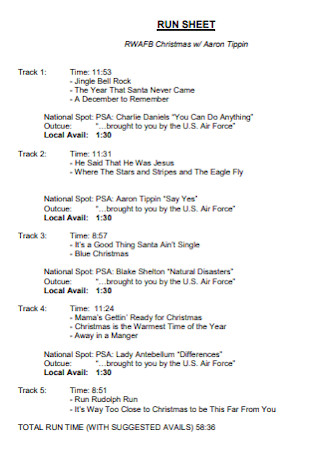
Formal Run Sheet
download now -
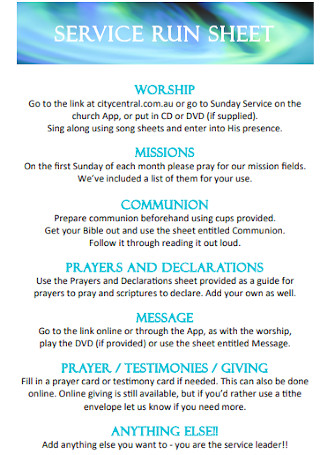
Service Run Sheet
download now -

Simple Run Sheet Example
download now -
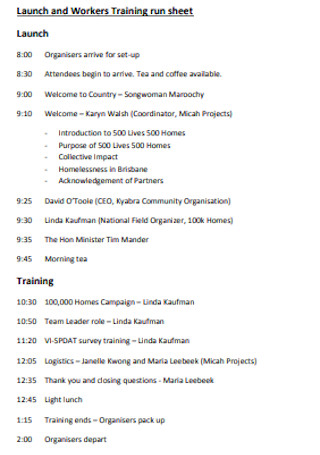
Launch and Workers Training Run Sheet
download now -
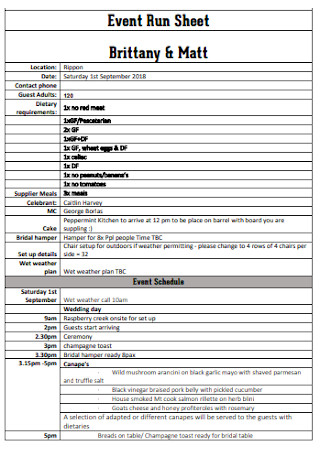
Event Run Sheet Example
download now -
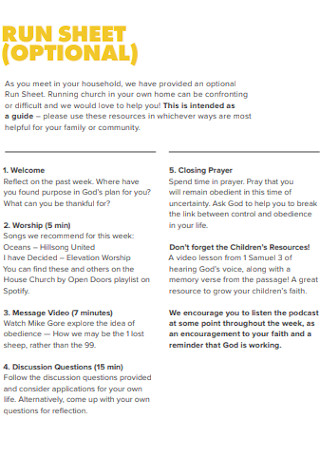
Church Run Sheet
download now -
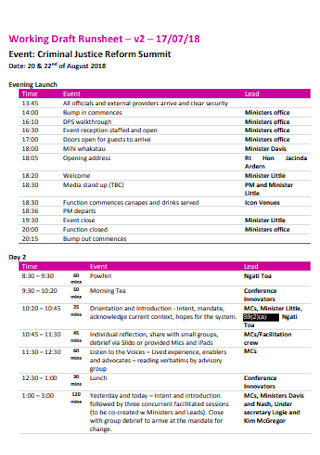
Working Draft Runsheet
download now -
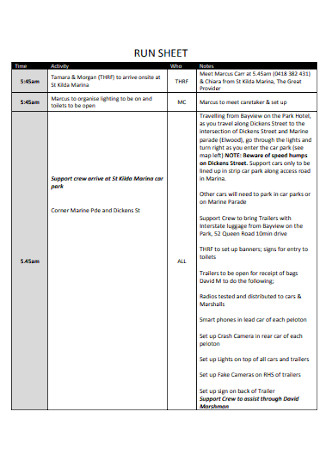
Standard Run Sheet Template
download now
FREE Run Sheet s to Download
Run sheet Format
Run sheets Samples
What are Run Sheets?
The Main Elements of a Run Sheet
How to Create a Run Sheet
FAQs
Is a run sheet the same as an agenda?
How do you guess the time given for every enlisted action in a run sheet?
How are run sheets used?
What are other forms of run sheets?
How does a Run Sheet improve event management?
What are the challenges in creating an effective Run Sheet?
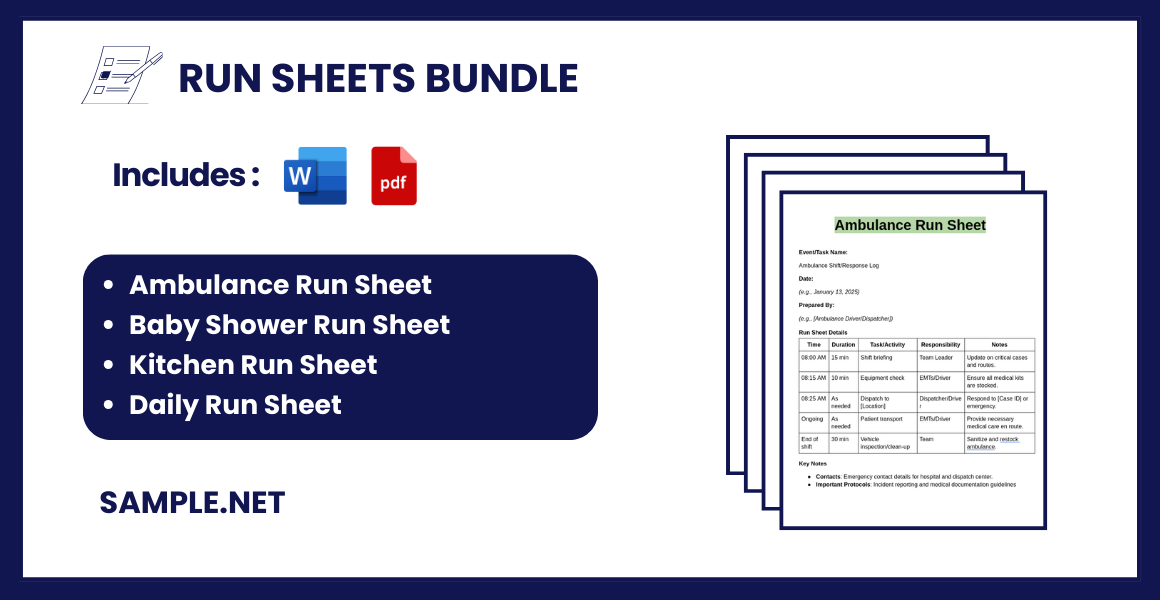
Run sheet Format
Event/Project Name:
(e.g., Annual Business Conference 2025)
Date:
(e.g., January 20, 2025)
Location:
(e.g., Grand Ballroom, Hilton Hotel)
Prepared By:
(e.g., [Name/Team Name])
Run Sheet Details
| Time | Duration | Activity/Task | Responsibility | Notes |
|---|---|---|---|---|
| 08:00 AM | 15 min | Setup and sound check | Tech Team | Ensure all microphones and projectors work. |
| 08:15 AM | 30 min | Registration begins | Front Desk Team | Provide name tags and welcome kits. |
| 08:45 AM | 10 min | Guests seated | Ushers | Guide guests to their assigned seats. |
| 09:00 AM | 20 min | Opening speech | CEO | Welcome address and introduction. |
| 09:20 AM | 40 min | Keynote presentation | Keynote Speaker | Topic: “Future of AI in Business.” |
| 10:00 AM | 15 min | Coffee break | Catering Team | Ensure refreshments are ready. |
| 10:15 AM | 1 hr | Panel discussion | Moderator & Panel | Q&A session included. |
| 11:15 AM | 30 min | Networking break | Event Coordinator | Light snacks and beverages. |
| 11:45 AM | 45 min | Workshop: [Topic] | Workshop Leader | Interactive session with audience. |
| 12:30 PM | 1 hr | Lunch break | Catering Team | Buffet-style lunch setup. |
| 01:30 PM | 2 hrs | Breakout sessions | Assigned Teams | Divide into smaller groups for workshops. |
| 03:30 PM | 15 min | Closing remarks | Host/Coordinator | Thank sponsors, partners, and attendees. |
| 03:45 PM | 15 min | Pack-up and wrap-up | Event Team | Clear the venue and collect feedback. |
Key Notes
- Contacts: Provide contact information for key individuals, such as the Event Manager, AV Team Lead, etc.
- Emergency Protocol: Outline emergency contacts, first aid locations, or protocols in case of incidents.
- Additional Resources: Include links or attachments for seating charts, maps, or schedules (if needed).
What are Run Sheets?
A run sheet is the official document used when you list down how a show or event runs from start to finish. Expect to write a list of tasks including their schedule. That way, you can arrange each process in chronological order. And run sheets play a great role in different industries to ensure no particular procedure is forgotten and that whatever has been planned will be processed smoothly in the end. You can also see more on Data Sheet.
The Main Elements of a Run Sheet
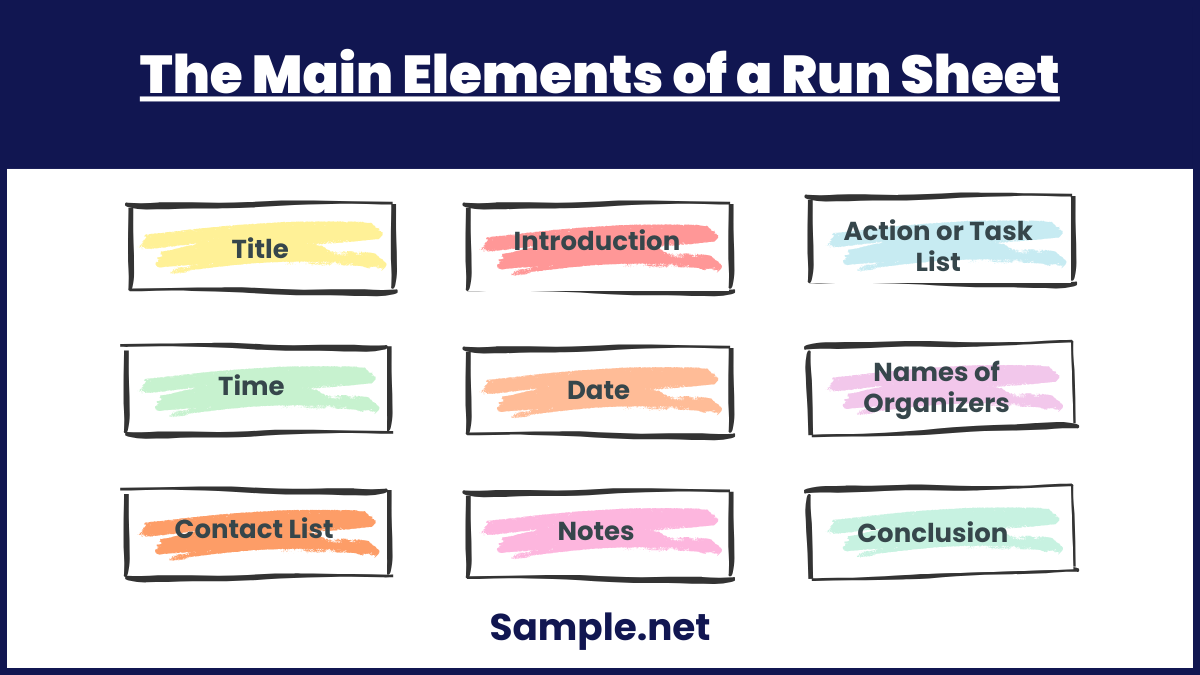
While the run sheet’s function, definition, and importance are clear, your next concern is to familiarize the parts or elements of a run sheet. Remember that each part completes the run sheet and you should insert them in your sheet as well. So without further ado, the main elements of a run sheet are:
How to Create a Run Sheet
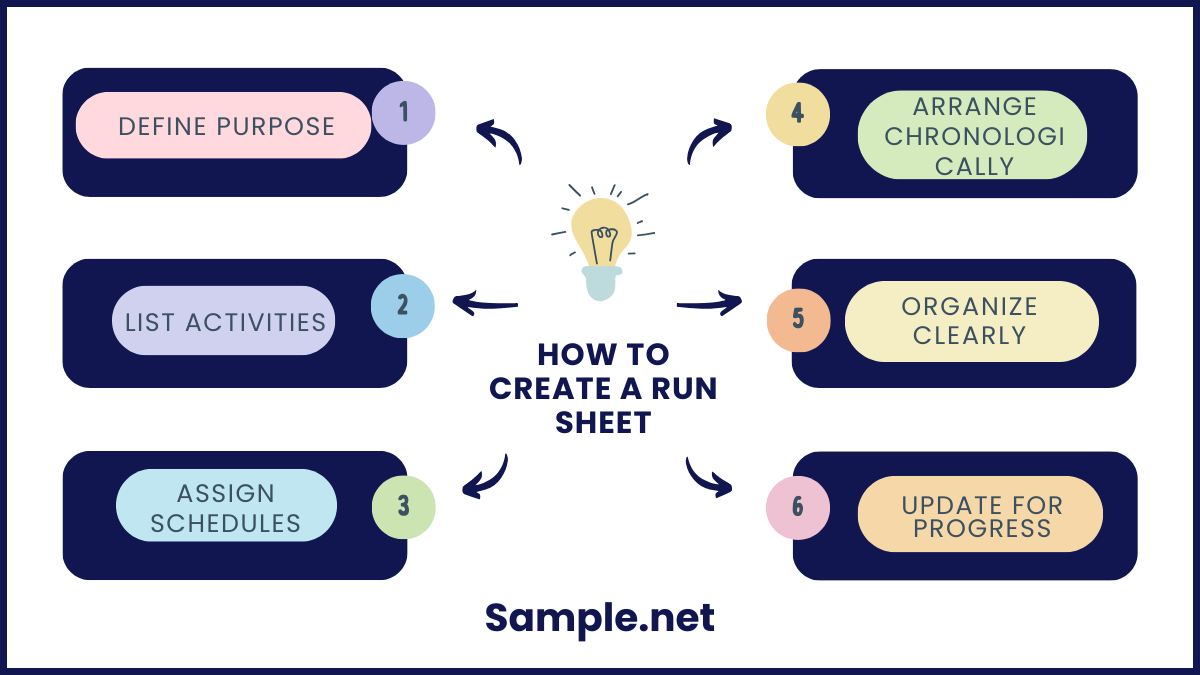
Are you ready to make your own run sheet? The process is not as complicated as it might look especially when samples are up for grabs. From the sample run sheets listed above, you can choose your preferred sample to customize, print, and download anytime. You can also see more on Call Sheets. And to ensure you got everything right, do not forget to apply these six important steps:
Step 1: Consider Your Purpose
Why do you need a run sheet? You must be specific with your run sheet’s purpose to not mix up your run sheet for all sorts of businesses. So whether you need the sheet for a press conference, television ad, or even a baby shower, be sure you stick to that intention. That way, you will not easily lose track of what details to add to the run sheet.
Step 2: Brainstorm the List of Activities
Now that you have your goals covered, consider writing every single action to do for your event or purpose. The key is to take time brainstorming for the possible activities and talk with the other organizers to identify each task. It does not matter how the sequence goes yet because this part is still for drafting the run sheet. And a quick task analysis can help you recognize the appropriate tasks to incorporate in your sheet.
Step 3: Assign a Schedule for Each Activity
The next step is to assign a specific schedule for every enlisted activity. Assigning the appropriate time and date is the proper way of doing this. Take a stage manager, for example. What time should guests appear on screen? And if there will be breaks involved, how long will it take? Also, check if what happens hourly, daily, weekly, and more will be the same or not because additional notes would be needed for changes. This is where scheduling is at play to ensure that every second, minute, or hour spent for an event runs according to plan.
Step 4: Arrange the Items Chronologically
The next crucial step is to arrange your list of items with the tasks and designated schedules in chronological order. This is basically the meat of your run sheet because you have to be sure of the timing of what happens first until the last part of the program. You may start assigning numbers to each item like a general list. So the first step should have the number one, the second step is number two, and so forth. You will eventually come up with the final arrangement that way. You can also see more on Judging Score Sheet.
Step 5: Organize Your Run Sheet
Always focus on organization to make an easy-to-follow run sheet. Otherwise, your sheet’s delivery of information might be weak. You can organize your run sheet’s elements into tables, perhaps. Or you divide the list of tasks according to their common elements. You may also arrange them according to their urgency level, difficulty level, importance level, etc. There is room for creativity in organizing your run sheet as long as it can help in running programs perfectly.
Step 6: Update the Run Sheet for Progress
Once you are done making the run sheet, that does not mean your job is done. You have to strictly follow what it says, learn to adjust for possible changes, and most importantly, update the sheet for any progress. There will likely be blanks provided in the sheet anyway for you to monitor events. An example is similar to an event checklist where you put checkmarks to every blank if its designated item has been finished already. The same goes for writing notes if necessary.
FAQs
Is a run sheet the same as an agenda?
Although both the run sheet and the agenda are useful guides on how to run events or programs smoothly, they are not entirely the same. An agenda merely highlights the main points or milestones achieved of an event. Hence, it does not give you the procedural and chronological steps of how to accomplish every item enlisted. Meanwhile, run sheets can promise you in inserting the procedures in the proper sequence. So consider a run sheet to be more detailed than an agenda.
How do you guess the time given for every enlisted action in a run sheet?
Estimating the time of each action in a run sheet is not a mere guessing game. You have to estimate by considering the possible duration of the activity, the ability of the organizers to achieve them, the number of workers, and even the available time for the said action. But here is a tip: add a contingency time of about 10–15% for each action above the estimated time. That will help you estimate time wisely. You can also see more on Sign-Up Sheets.
How are run sheets used?
Run sheets showcase the detailed list of quotes, schedules, and activities chronologically. And they are mostly used by contractors and employees. With that said, they are often used when you print or email the sheet to a contractor or employee.
What are other forms of run sheets?
Run sheets come in various forms depending on your intention of using them. For example, you can use a payroll run sheet, delivery run sheet, patient run sheet, commercial run sheet, and many more. You can also see more on Company Sheet.
How does a Run Sheet improve event management?
A Run Sheet acts as a roadmap for event organizers, outlining every segment of the event from start to finish. It provides clarity on timelines, tasks, and responsibilities, ensuring that all team members are on the same page. This minimizes errors, prevents delays, and ensures seamless transitions between activities. The detailed structure also helps identify potential issues early, making the event execution stress-free and efficient.
What are the challenges in creating an effective Run Sheet?
Creating an effective Run Sheet can be challenging due to the complexity of large-scale events or operations. It requires careful planning, attention to detail, and coordination with multiple stakeholders. Ensuring that all tasks are included, time slots are realistic, and responsibilities are clearly assigned can be time-consuming. However, addressing these challenges ensures smooth execution and better outcomes. You can also see more on Approval Sheet.
